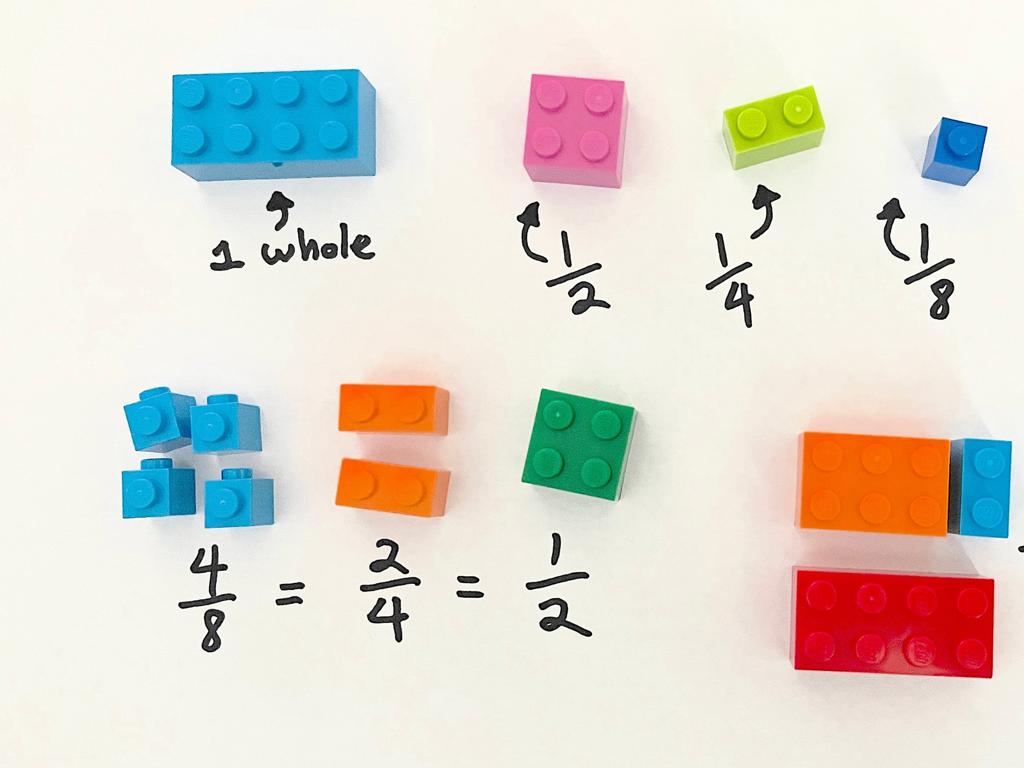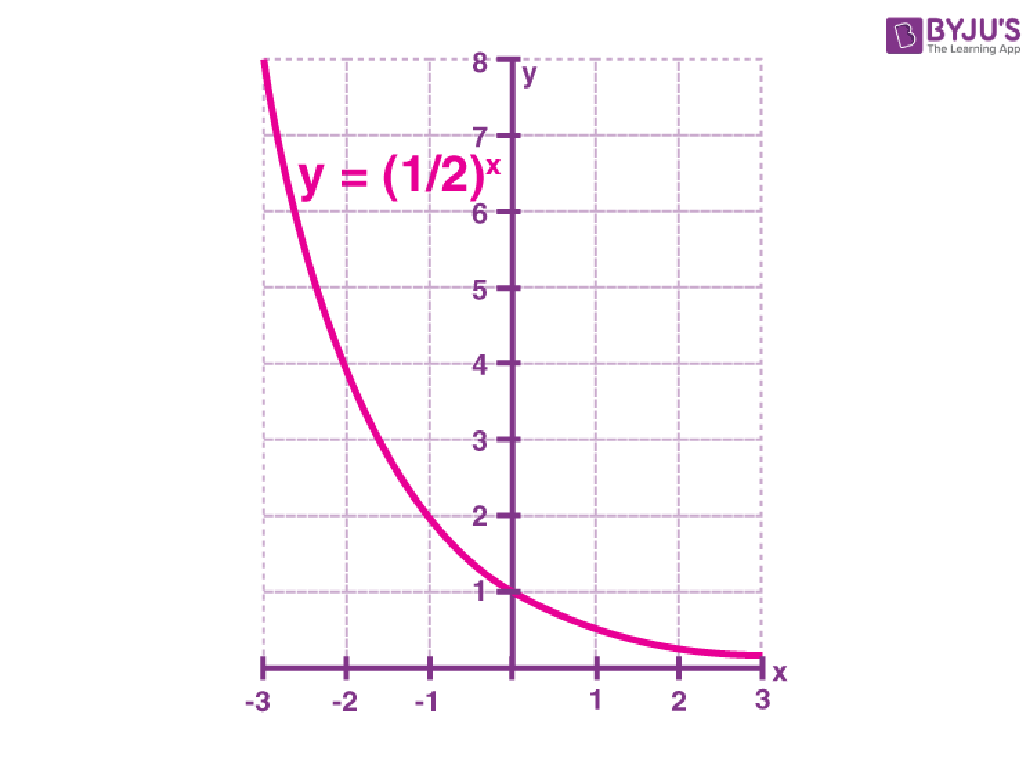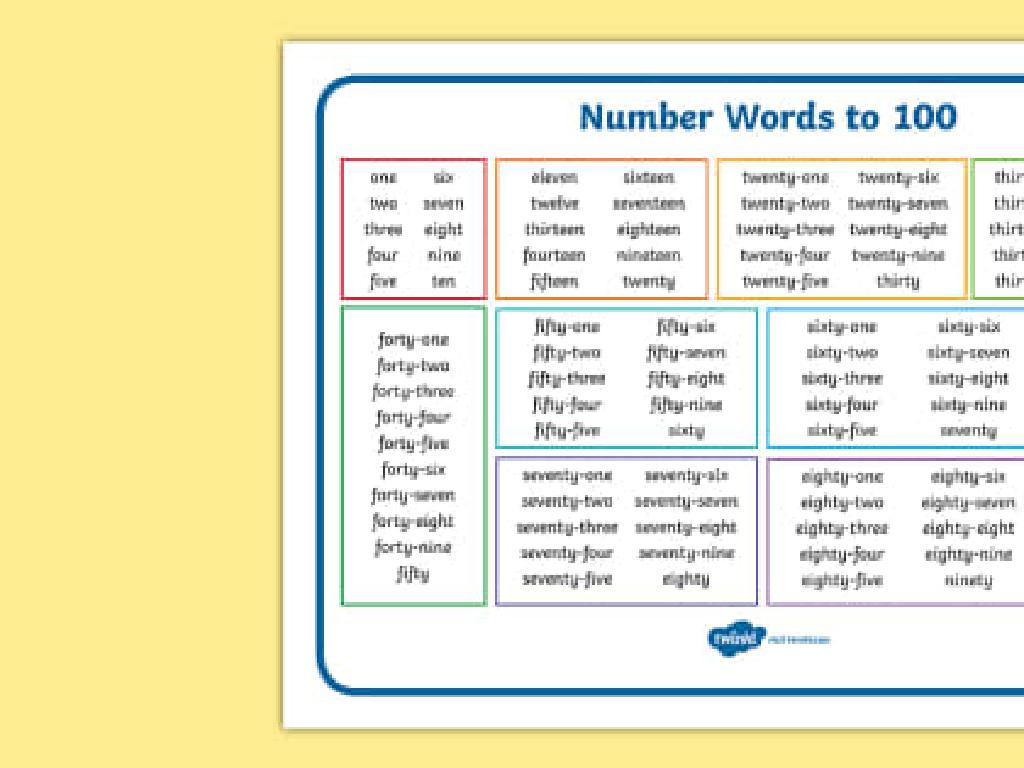Match Analog Clocks And Times
Subject: Math
Grade: Kindergarten
Topic: Time
Please LOG IN to download the presentation. Access is available to registered users only.
View More Content
Welcome to Telling Time!
– Greet our little timekeepers
– Today’s lesson: clocks and time
– Why understanding time is important
– Knowing time helps us with daily routines like meals, school, and playtime.
– Fun activities to learn time
– We’ll match clock hands to the correct time on fun worksheets.
|
This slide is designed to introduce Kindergarten students to the concept of time using analog clocks. Start with a warm greeting to make the children feel excited about the lesson. Explain that understanding time is a crucial life skill that helps us organize our day, from knowing when to wake up, to scheduling meals and playtime. Use simple language and examples that are relatable to their daily routine. The lesson will include hands-on activities where students will practice matching the position of the clock hands to specific times. This interactive approach will help them grasp the basics of reading time on analog clocks. Ensure to have various worksheets and possibly toy clocks for practice.
Learning About Time
– Time: Day’s start and end
– Time helps us know when a new day begins and when it ends.
– Time for daily activities
– We use time to schedule eating, playing, and sleeping.
– Units of time
– Seconds, minutes, and hours are how we measure time.
|
This slide introduces the concept of time to Kindergarten students. Begin by explaining that time is a way to know when the day starts in the morning and ends at night. Highlight how time helps us organize our day, such as knowing when to have meals, enjoy playtime, and go to bed. Discuss the basic units of time seconds, minutes, and hours, and relate them to familiar concepts like the duration of a cartoon episode or how long it takes to eat a snack. Use a real analog clock to show these times if possible. Encourage students to think of their own examples of activities they do at specific times.
Our Friend, the Clock: Learning Time
– Clocks show us the time
– Two types: analog and digital
– Today’s focus: analog clocks
– Analog clocks have a face with numbers and two hands that point to the time.
– Analog clocks have moving hands
– The long hand shows minutes, and the short hand shows hours.
|
This slide introduces the concept of time and clocks to Kindergarten students. Begin by explaining that clocks are tools we use to know what time it is, which helps us with our daily schedule like knowing when it’s time for school or bedtime. Highlight the difference between analog and digital clocks, emphasizing that today’s lesson will focus on analog clocks. Explain that analog clocks have a round face with numbers and two hands that move around the clock. One hand is shorter, which tells us the hour, and the longer hand tells us the minutes. Use a real or toy analog clock to demonstrate how the hands move and how to read the time. Encourage the children to observe the movement of the hands and relate it to activities they do at specific times, like lunch at 12:00.
Parts of an Analog Clock
– Clock face with numbers 1-12
– Short hand for the hour
– The short hand points to the hour
– Long hand for minutes
– The long hand counts the minutes, 60 in total
– Understanding clock hands
– We’ll learn to tell time by looking at both hands
|
This slide introduces the basic components of an analog clock to Kindergarten students. Emphasize the clock face with numbers 1 through 12, which they may already be familiar with. Explain that the short hand tells us what hour it is, while the long hand shows how many minutes have passed within the hour. Use simple language and examples, such as relating the hour hand to their routine (e.g., ‘When the short hand points to 8, it’s time for school’). For the minute hand, you can use a full circle to explain the concept of 60 minutes making an hour. During class, have several clocks available for hands-on practice, and consider using interactive games where children can match times to activities in their daily routine.
Matching Time to Clocks
– Hands show different times
– Long hand at 12 means o’clock
– When the long hand is at 12, the short hand tells the hour.
– We’ll match times to clocks
– Look at the clock and choose the right time it shows.
– Practice with real clock faces
– Use toy clocks to learn how to match.
|
This slide introduces the concept of reading analog clocks to Kindergarten students. Emphasize that the position of the clock hands tells us the time. The long hand is the minute hand, and when it points to 12, we look at where the short hand is to know the hour. During the activity, provide various clock faces and ask students to match them with written times. Use toy clocks or clock faces on paper to make it interactive. Encourage students to practice by setting the hands to match specific times. This hands-on activity will help them understand the concept of time and how to read it on an analog clock.
Practice Time: Matching Clocks and Times
– I’ll show you a time
– We move the clock hands together
– Short hand is the hour, long hand is the minutes
– Example: 3 o’clock setting
– Short hand points to 3, long hand points to 12
– Let’s practice with different times
|
This slide is designed for a hands-on activity where students will learn to match times to the positions of the hands on an analog clock. Start by explaining that the short hand shows the hour and the long hand shows the minutes. Use a large classroom clock or individual clocks for students to manipulate. Demonstrate setting the clock to 3 o’clock by moving the short hand to 3 and the long hand to 12. After the demonstration, encourage students to practice with different times, guiding them as needed. This activity will help students become familiar with reading analog clocks. Possible variations for the activity could include matching times to daily activities, such as lunchtime or naptime, to make the concept more relatable.
Game Time: Clock Match!
– Match digital to analog clocks
– I’ll show a digital time
– Find the analog clock match
– Look for the clock with the same hour and minute hands positions
– Ready to play and learn?
– Let’s have fun with time!
|
This interactive game is designed to help Kindergarten students understand the relationship between digital and analog clocks. Display a digital time on the board and have a variety of analog clocks available for students to choose from. Guide them to look at the position of the hour and minute hands to find the correct analog clock that matches the digital display. This activity will reinforce their ability to tell time and recognize different clock formats. Encourage participation, praise correct matches, and gently correct any mistakes. This will be a fun and educational activity to enhance their time-telling skills.
Class Activity: Make Your Own Clock!
– Create a paper clock with hands
– Learn to tell time as a group
– We’ll move the hands and practice different times
– Use your clock at home
– Show your parents how you can tell the time
– Share time-telling with family
– Teach your family what you’ve learned
|
This activity is designed to provide a hands-on experience for the students to learn about telling time. Each student will create their own paper clock with movable hands. As a teacher, prepare templates for the clock faces and hands in advance. During the activity, guide the students through the process of assembling their clocks and then use them to practice setting and reading different times. Encourage the children to work together and help each other. After the activity, invite students to take their clocks home and use them to tell their family members what time it is throughout the day. This will reinforce their learning and allow them to demonstrate their new skills. Prepare a list of times for the students to practice, such as time for lunch, play, and reading.
Review and Goodbye!
– Great job learning today!
– Reading analog clocks mastered
– We matched clock hands to hours and minutes
– Practice makes perfect
– Keep practicing at home with your own clocks
– You’re becoming time experts!
|
This slide is meant to wrap up the lesson on reading analog clocks. It’s a moment to celebrate the children’s effort and encourage them to continue practicing. Reinforce the idea that with practice, they will become proficient in telling time. Remind them to look at clocks at home and try to read the time throughout the day. You can suggest that parents help by asking them what time it is at different points in the day. This will help solidify their understanding and make them more confident in their time-telling skills.






